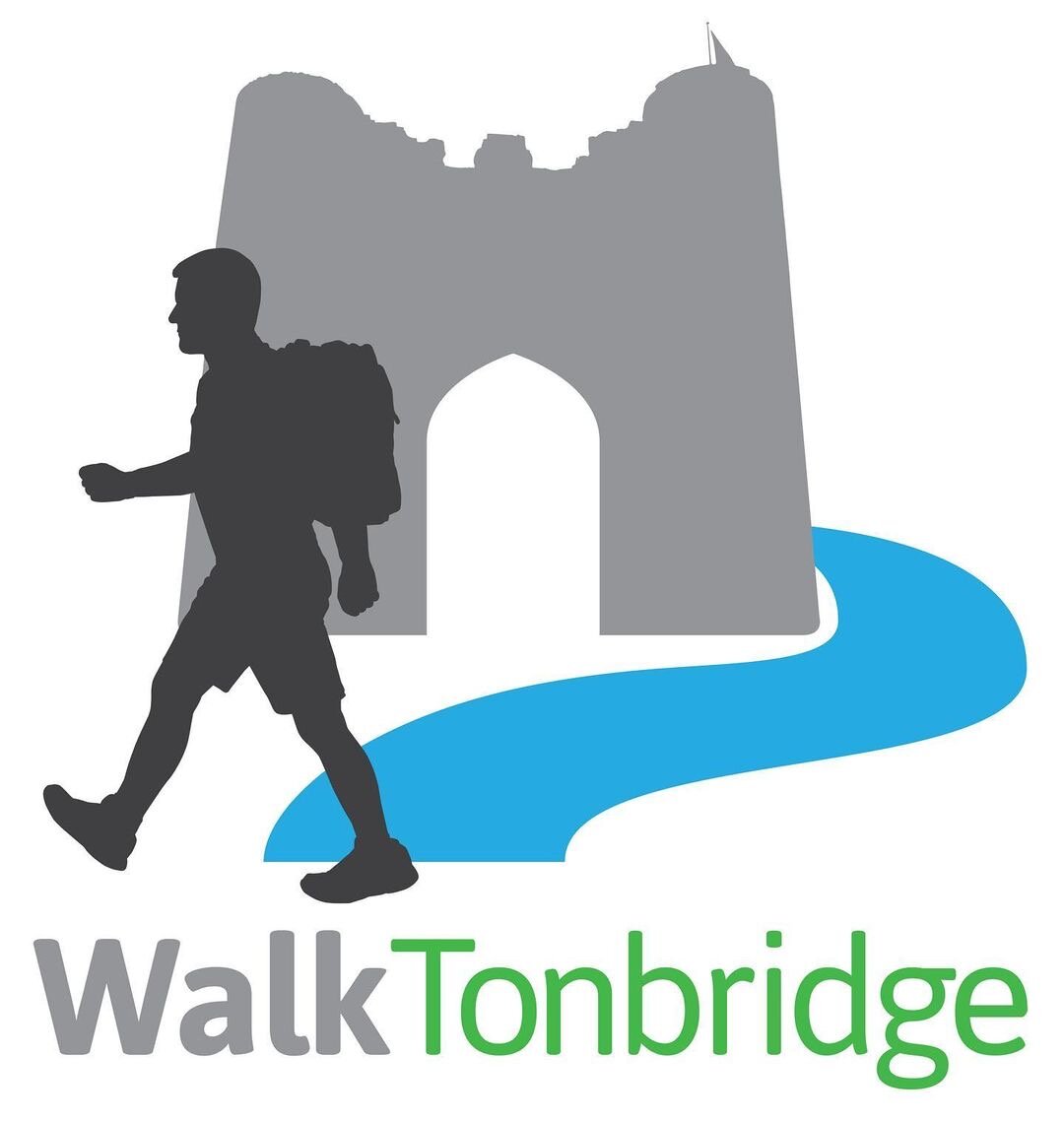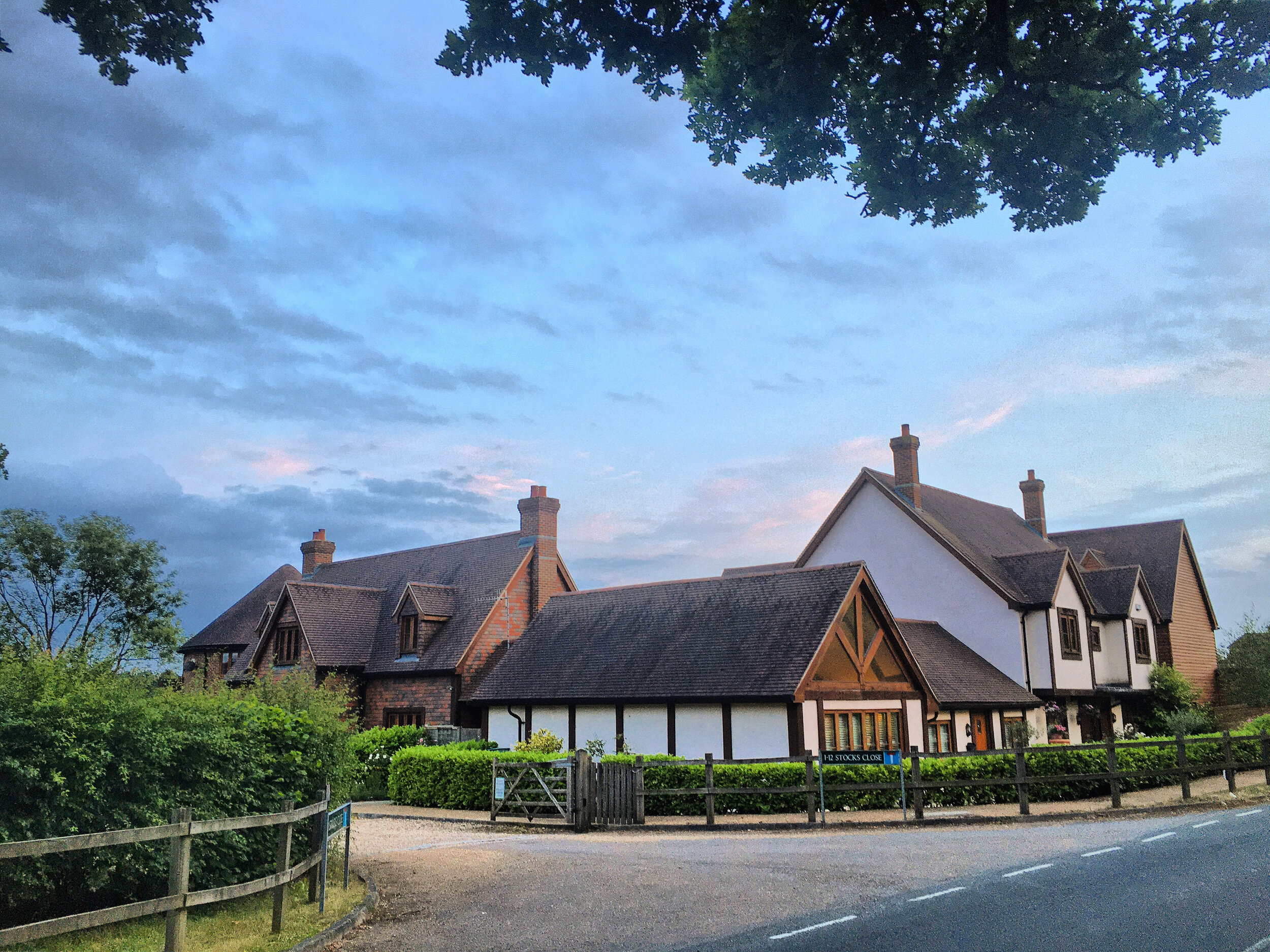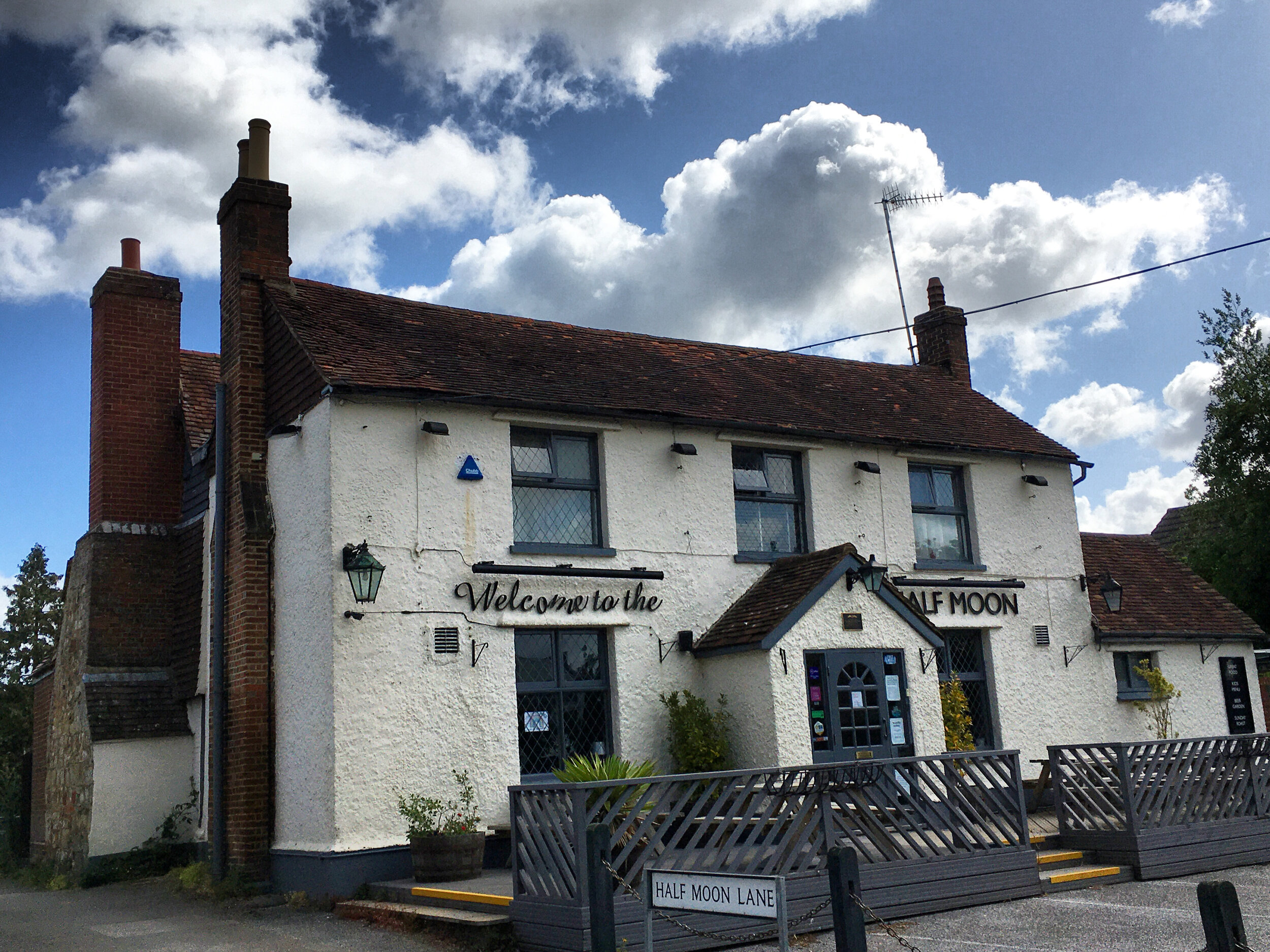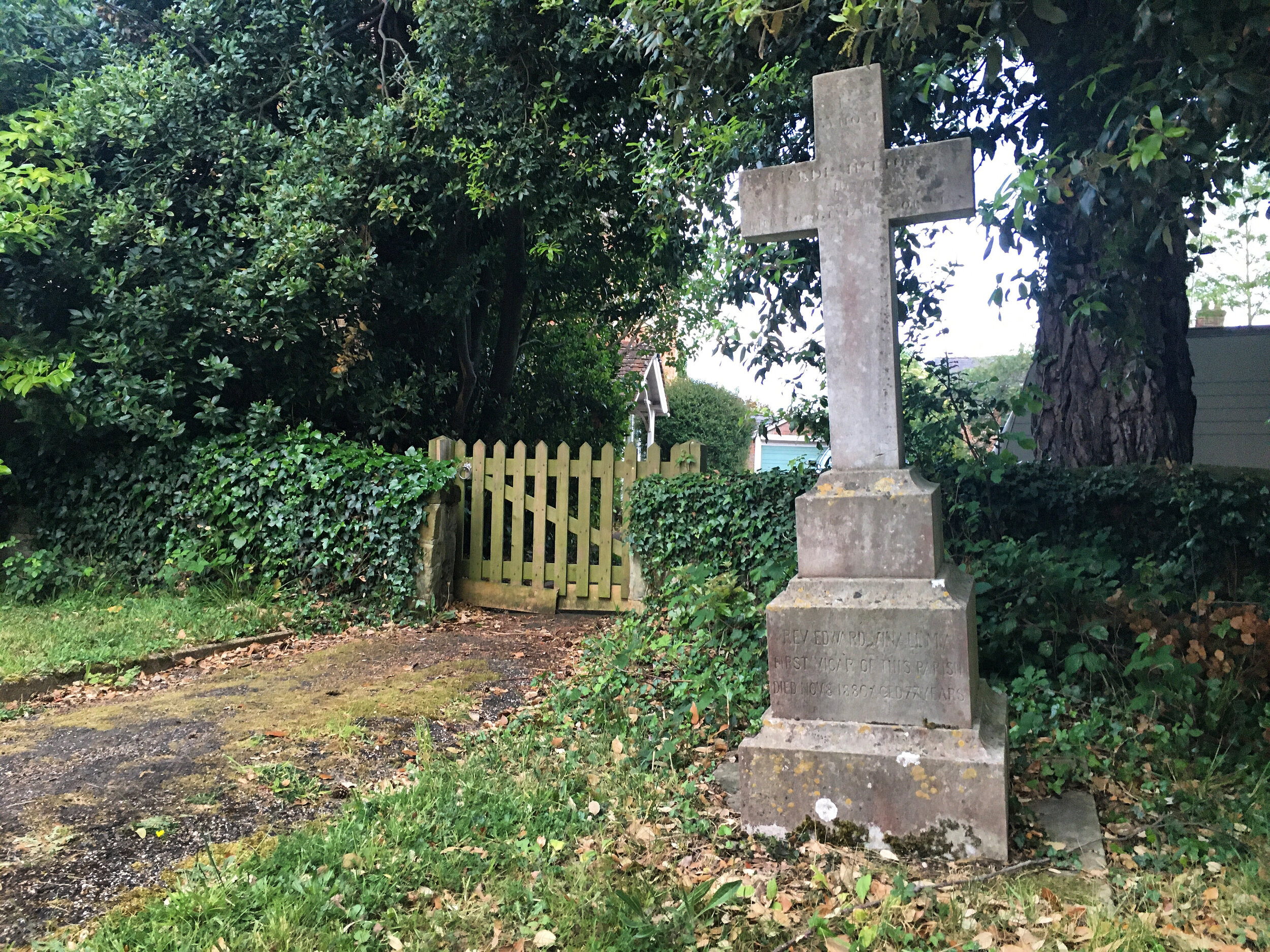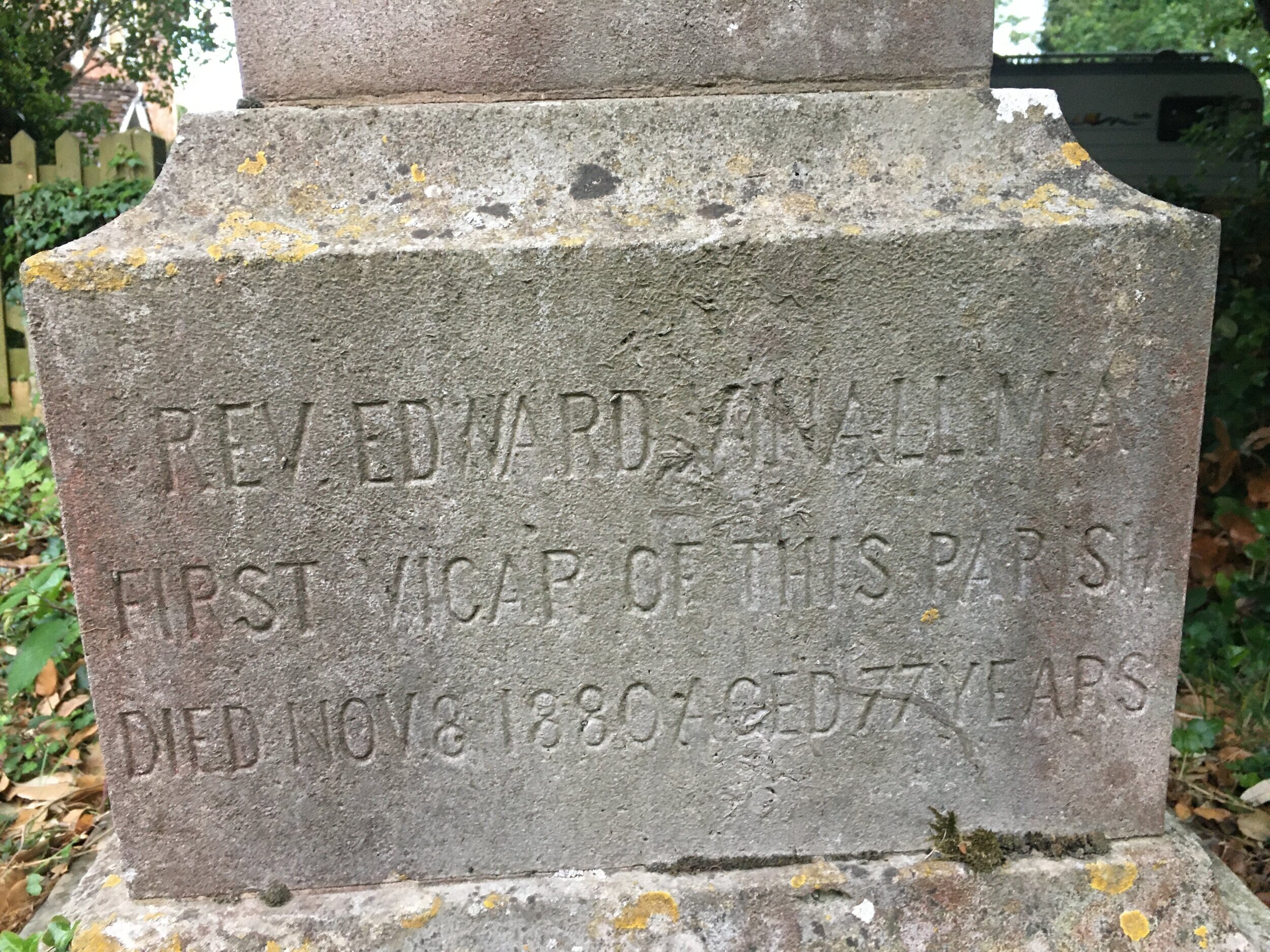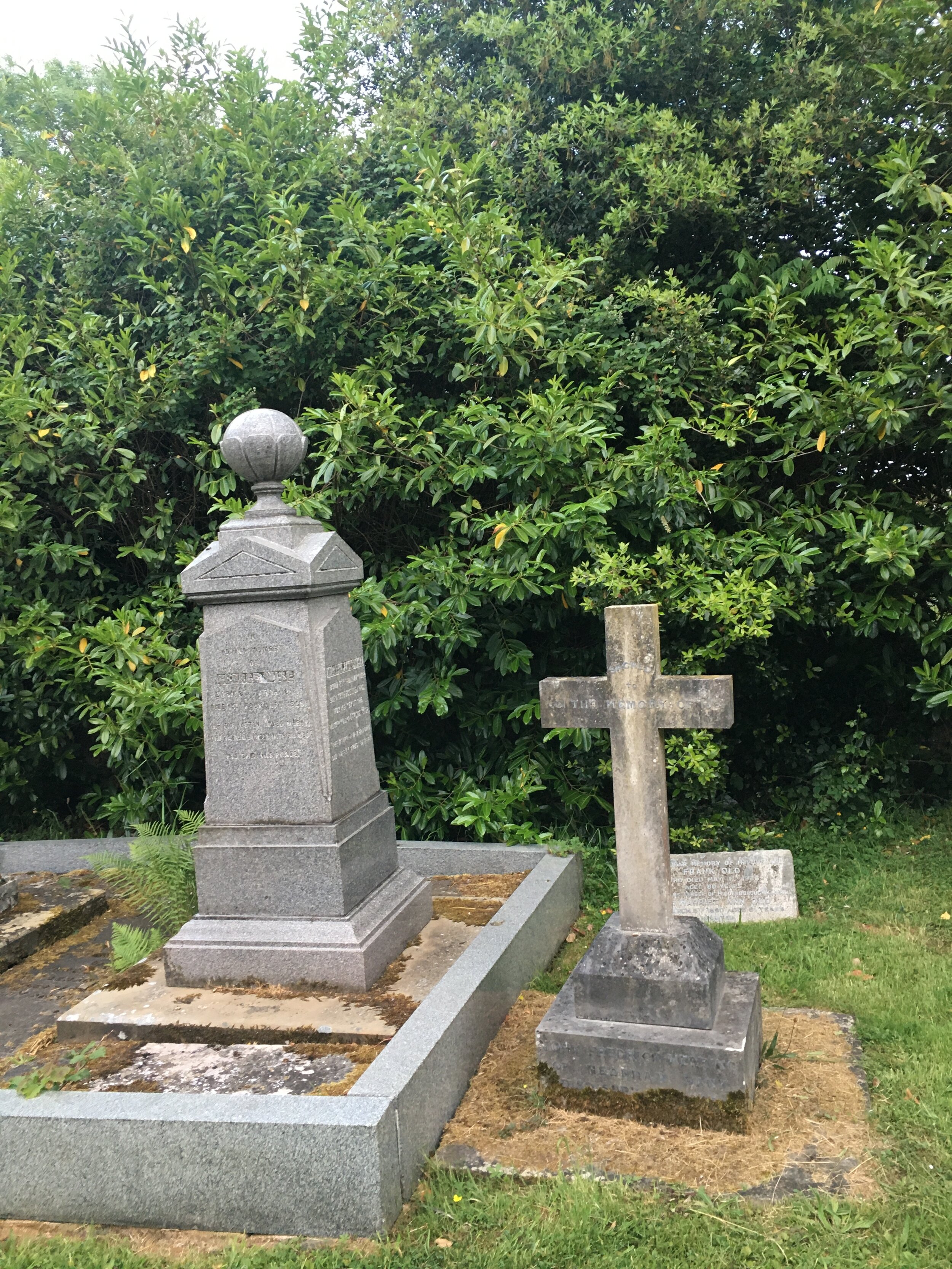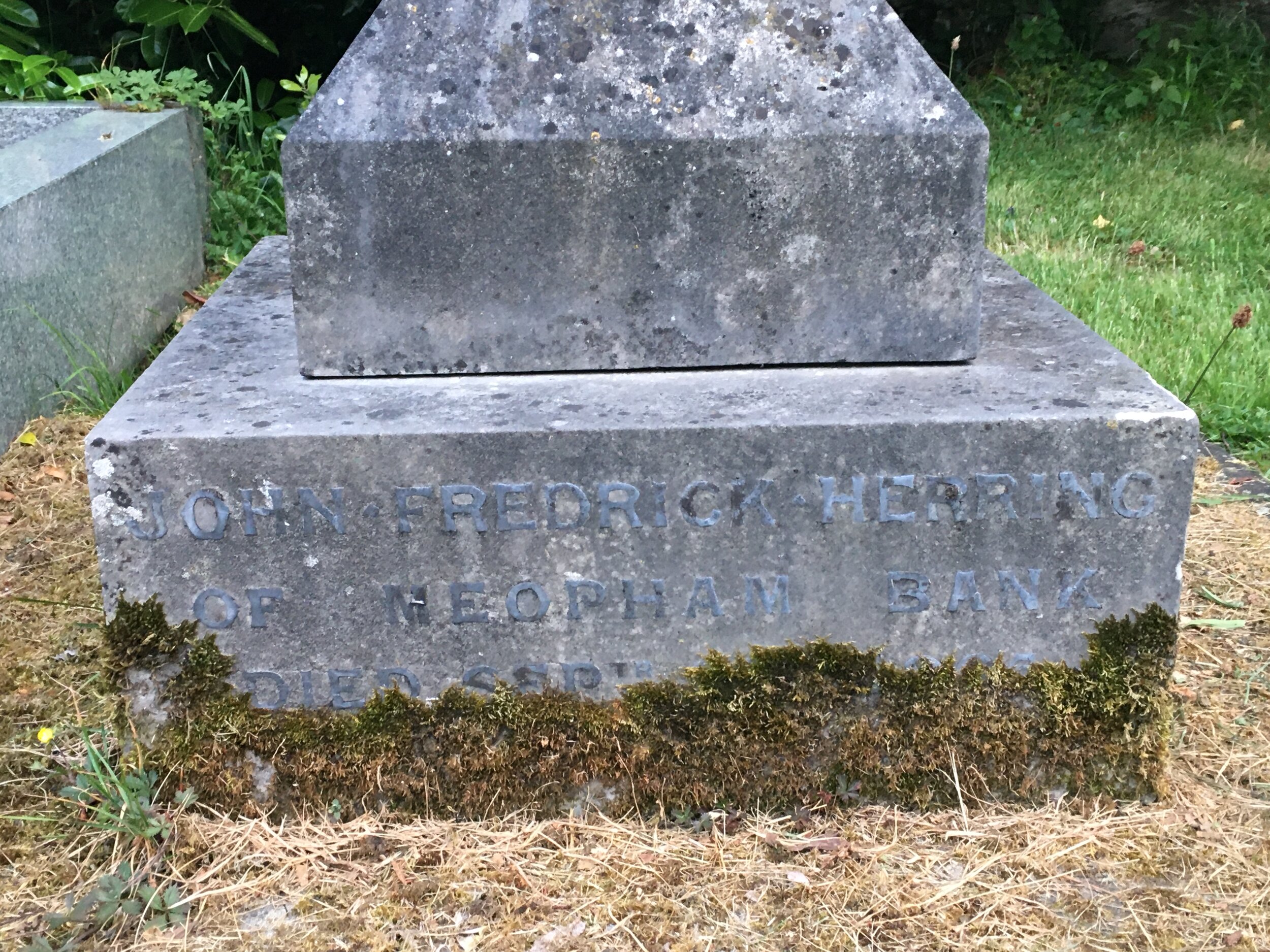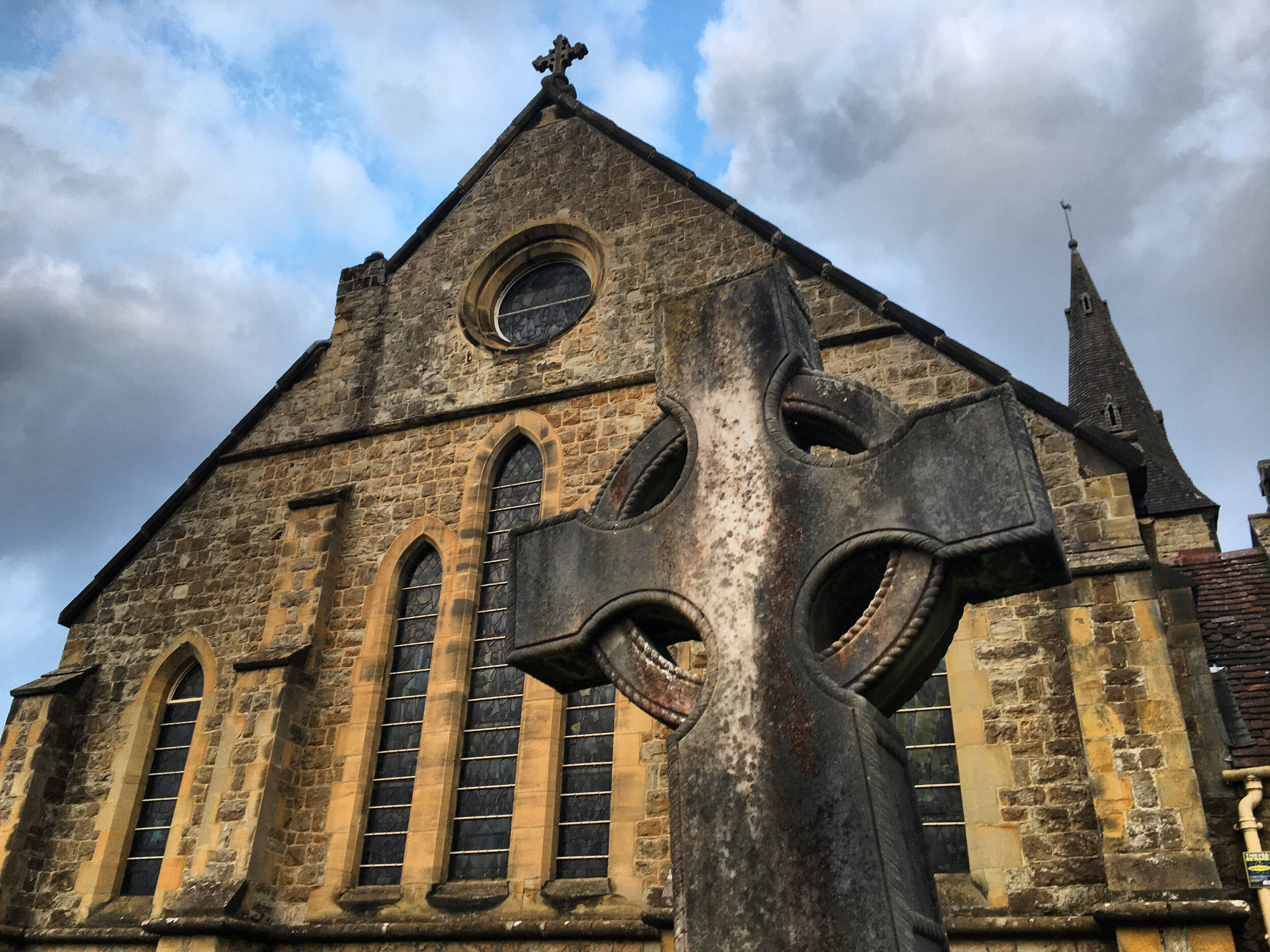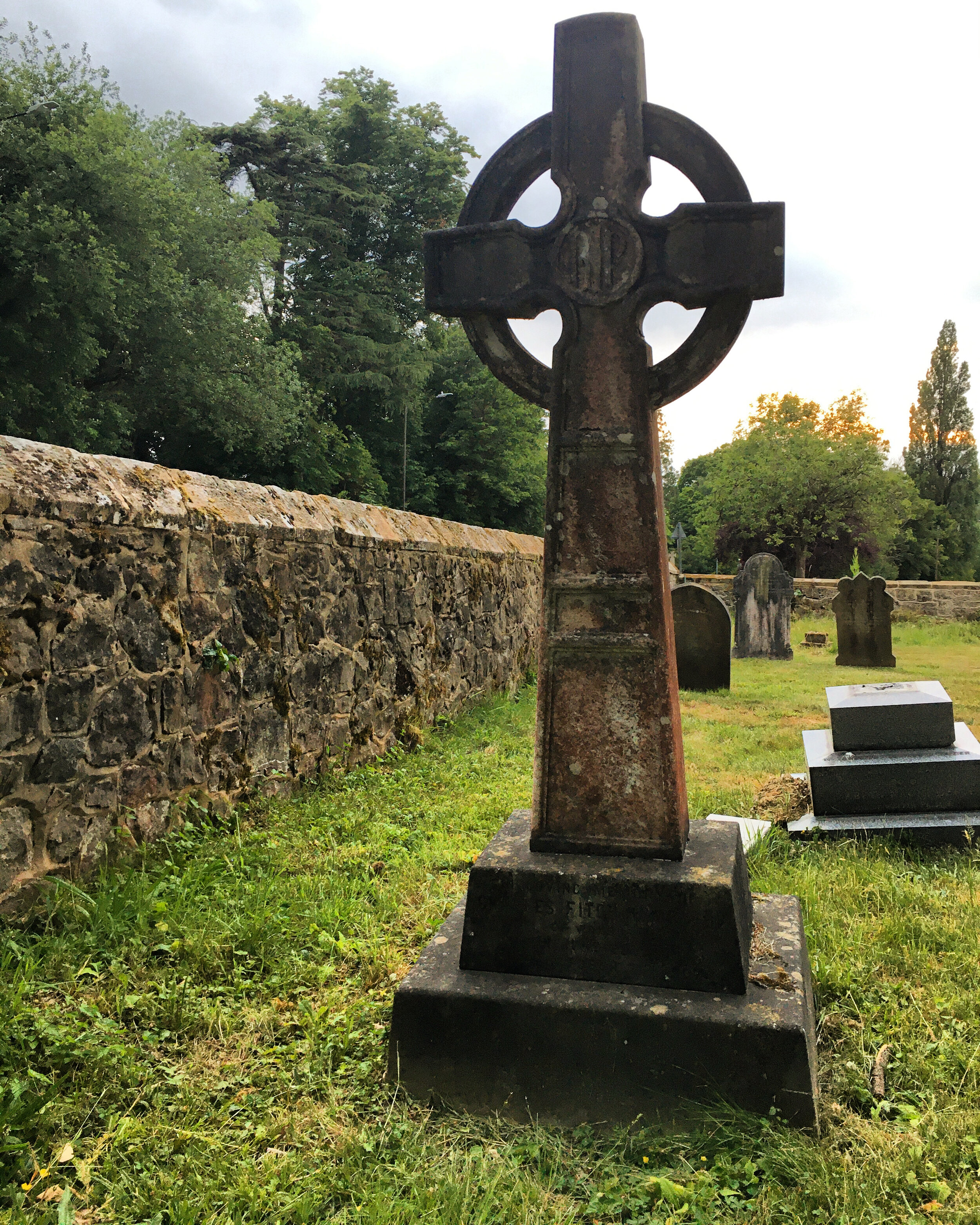Walk 9: Tales From The Shire
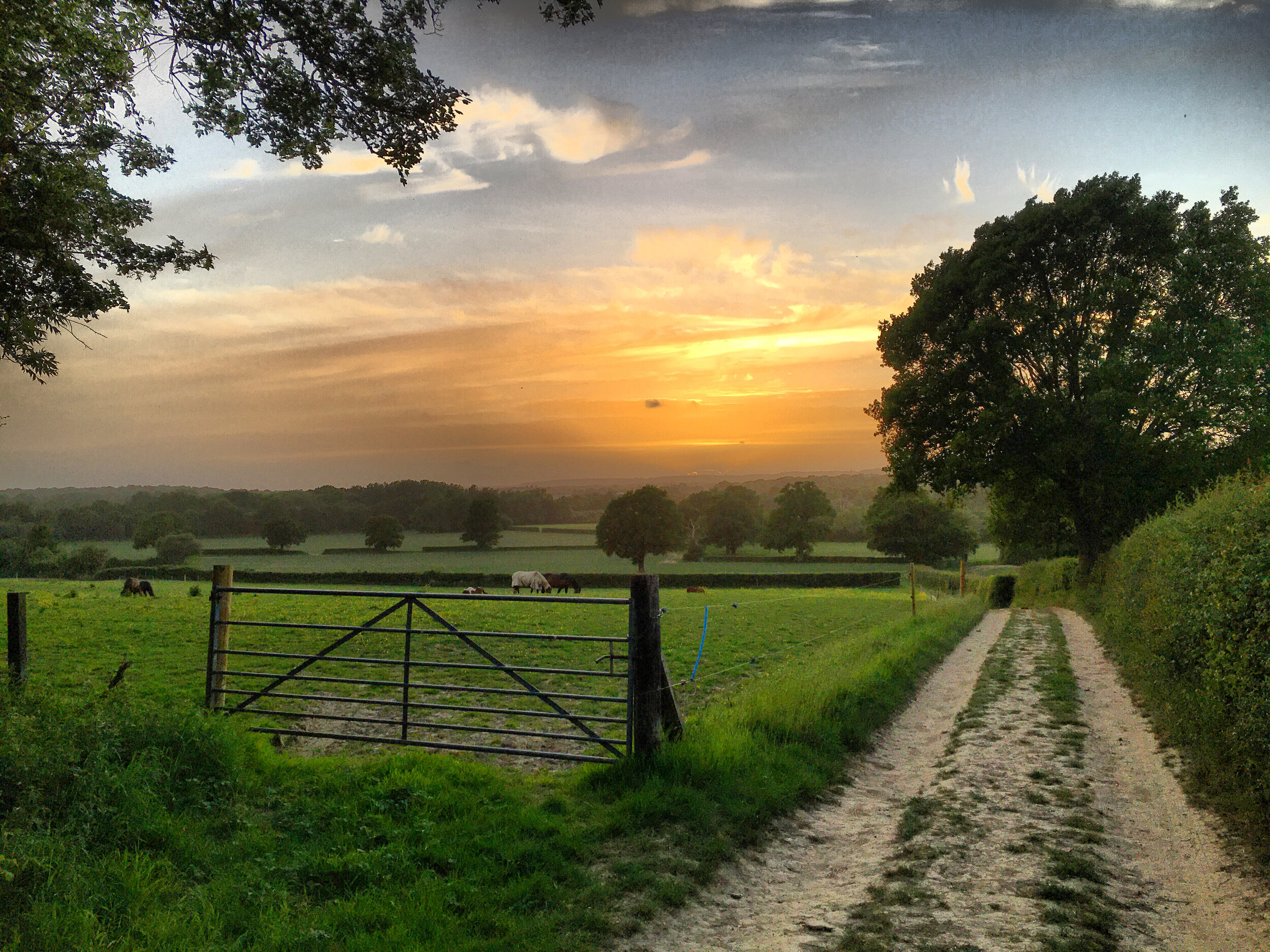
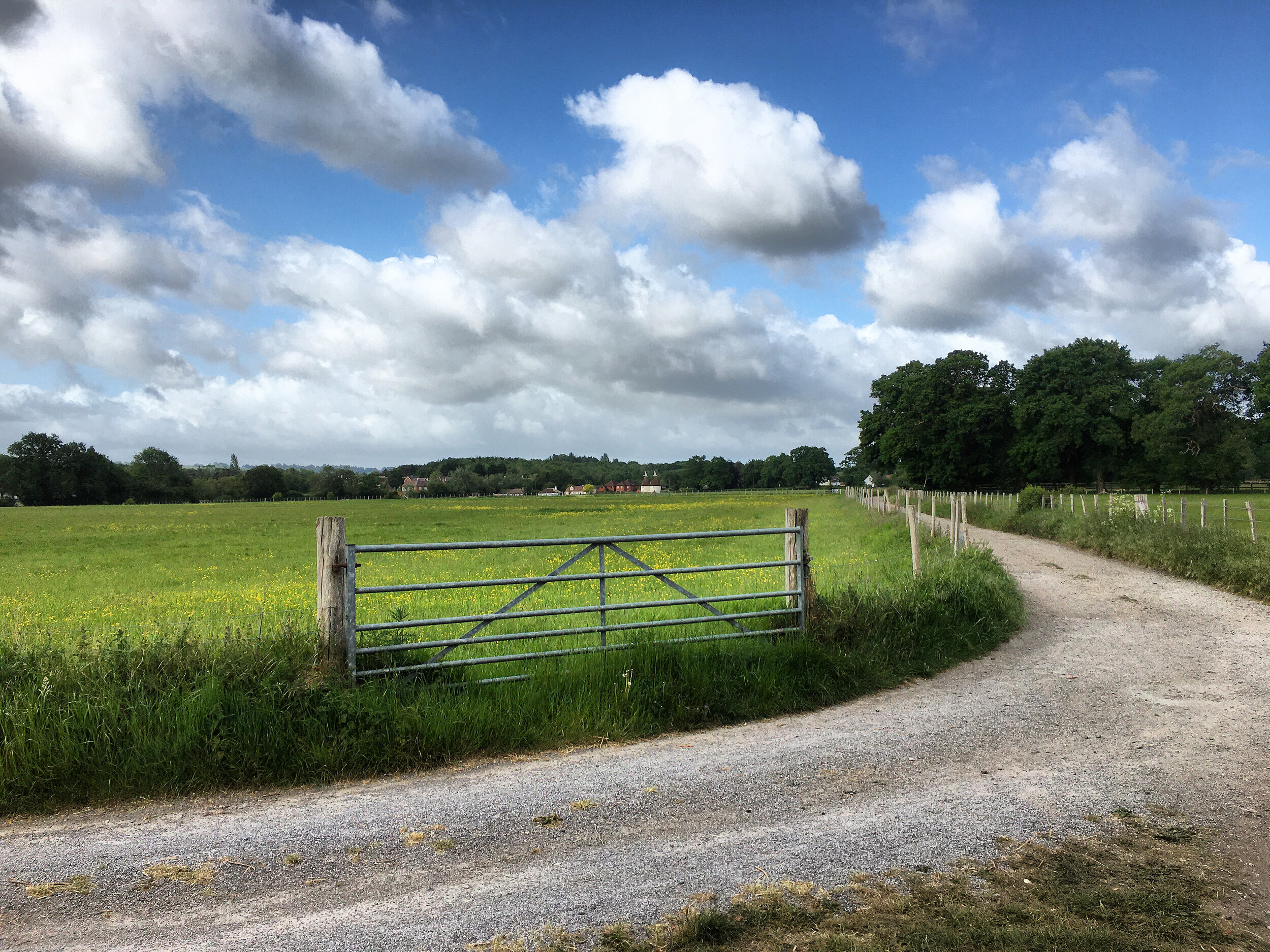
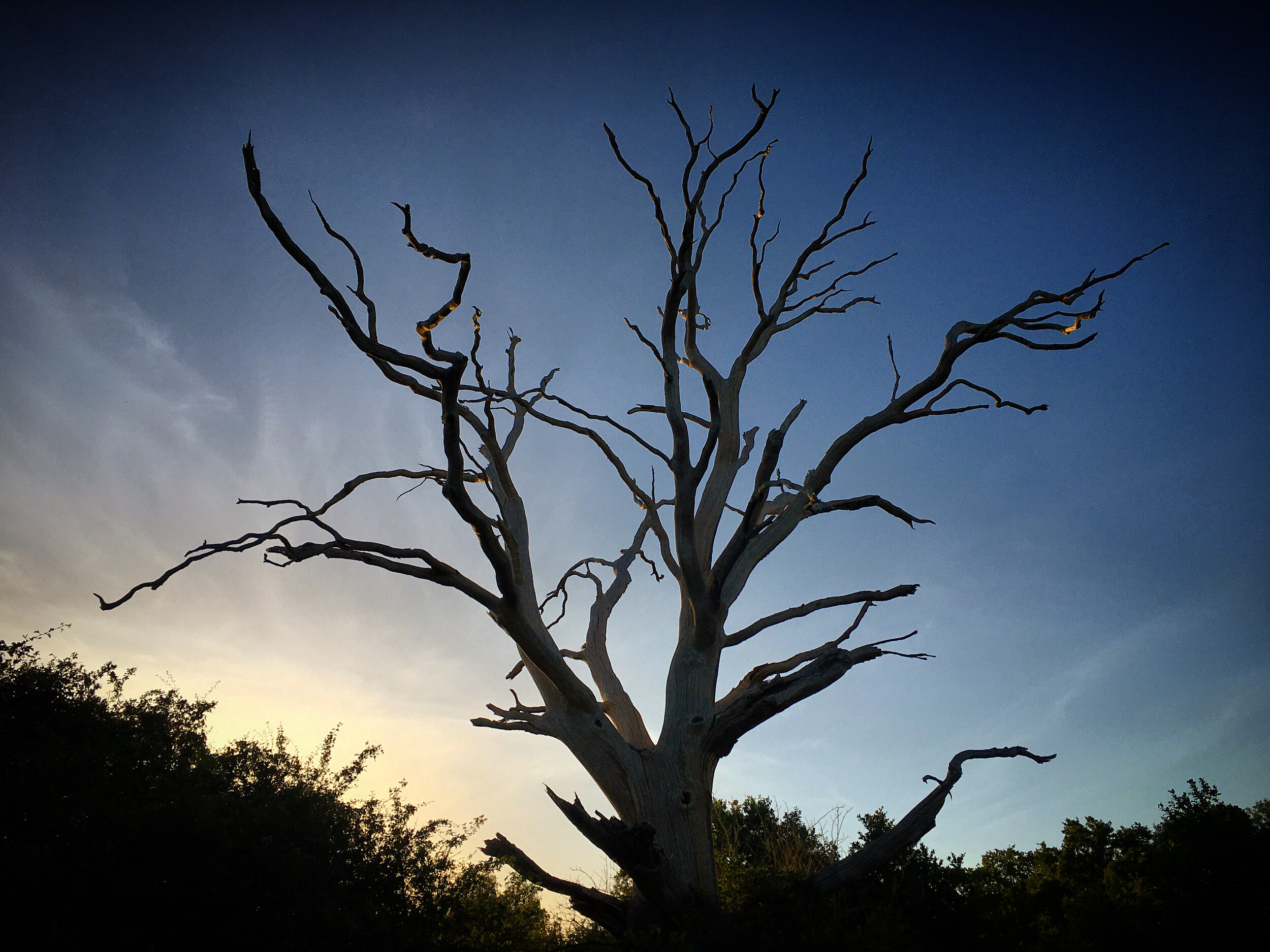
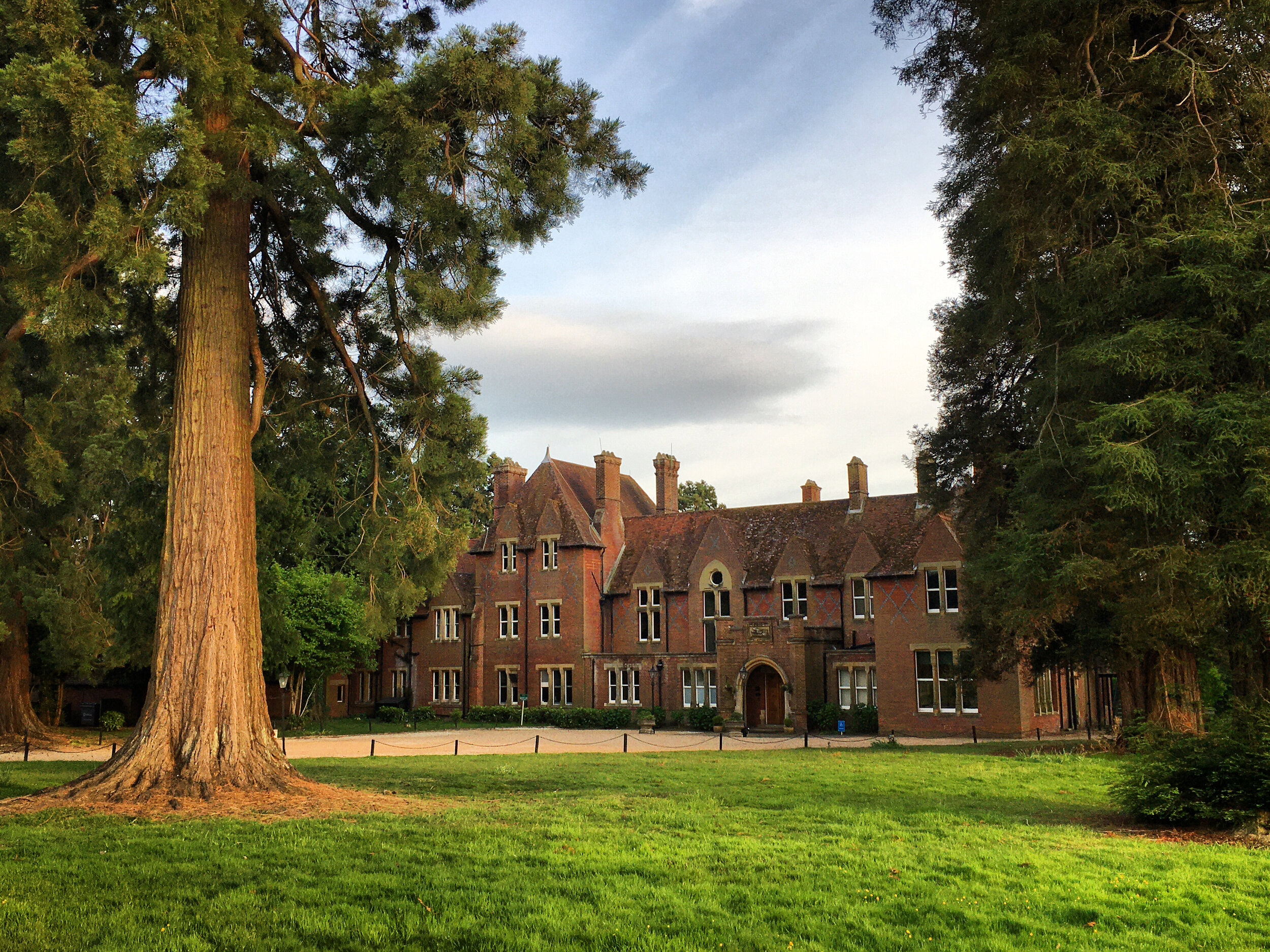


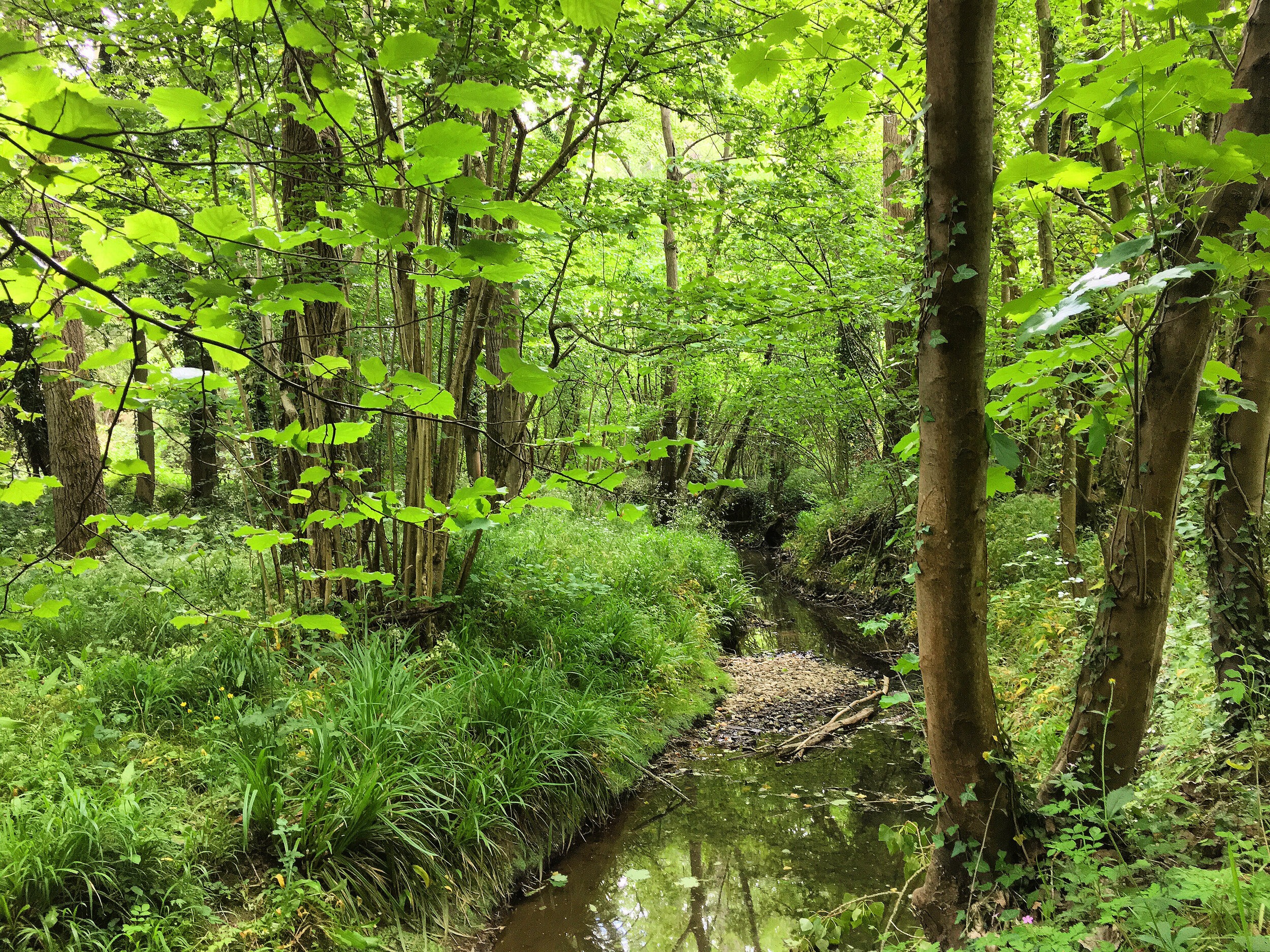
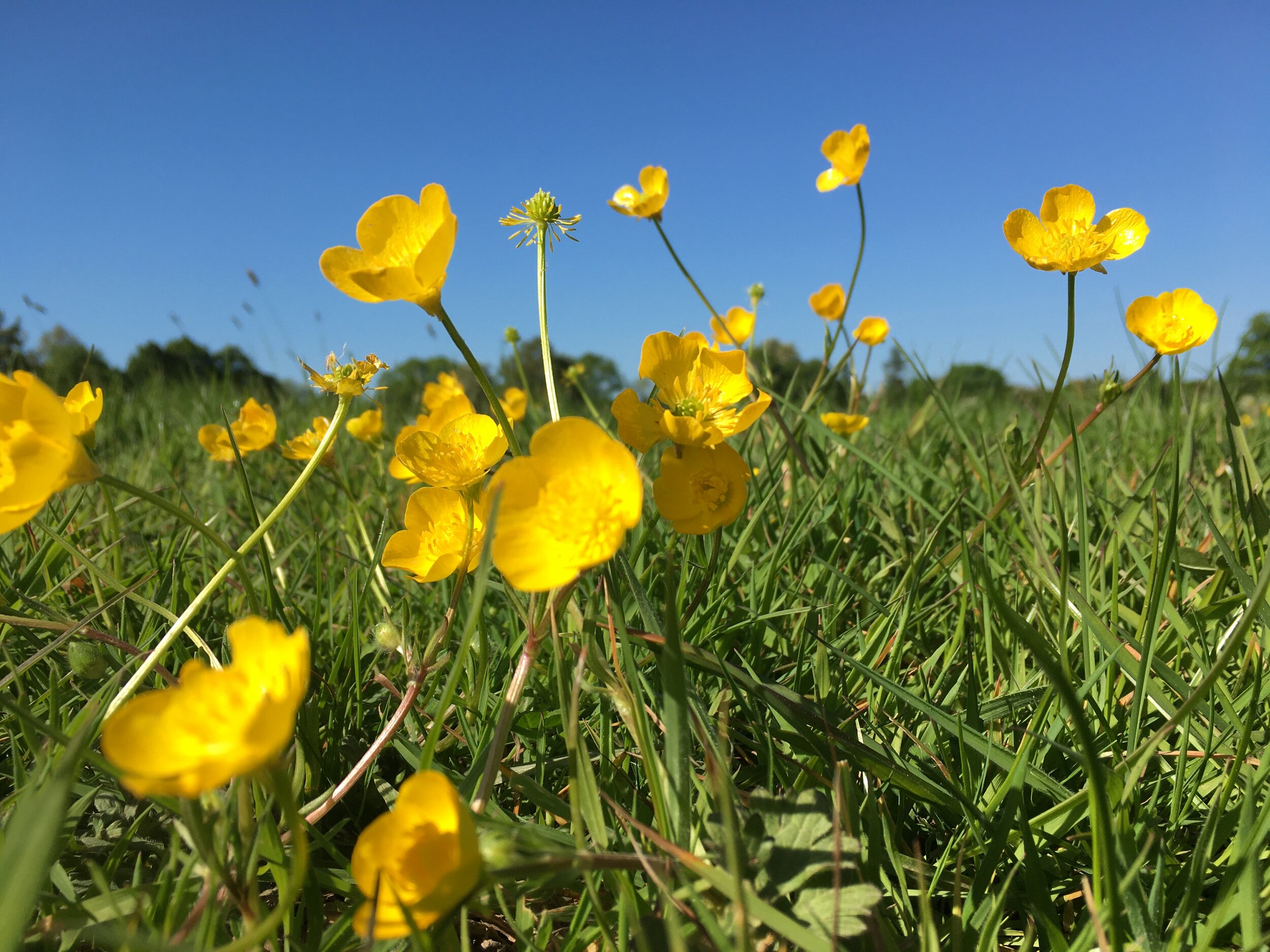
When I first pulled my map from the bookcase at the beginning of lockdown, my initial instinct had been to explore. I wanted to see something new and unfamiliar, to try and rekindle the sensation of travel that was being stifled by the lockdown restrictions.
After launching Walk Tonbridge my family began asking when I was going to do a Hildenborough based route. In reality though it had not crossed my mind to return to the village that I grew up in, I knew many of the paths well and I still had others walks in the Tonbridge area that I wanted to venture to.
Eight local walks later and I couldn’t put off a return to TN11 any longer. I’ve walked and re-walked these footpaths so many times, taking the route forwards and backwards, whilst experimenting with different variants and times of day. Each time I was searching for something new or different but it was the same recollections that kept coming back though - childhood adventures, old faces, funny memories and familiar places.
You’ll have to indulge me in parts where I’ve gone off on a tangent, this walk has been a genuine labour of love. I do hope that you will find it an interesting read though and if not, at least you’ll appreciate the walk around this village I once called home.
Whilst I have your attention, I would like to make an appeal on behalf of a local charity - Chasing Connor’s Cure. Connor Crawford is a Hildenborough boy, whose family I have known nearly all my life. In 2016 he was diagnosed with a rare form of Muscular Dystrophy called Duchenne. The disease attacks the muscles and in most cases mobility is lost by the age of 10, before eventually it attacks the lungs and heart, leading to a dramatically reduced life expectancy.
Connor and his Dad Matt. (Pic: Chasing Connor’s Cure)
If you have enjoyed any of the Walk Tonbridge walks you have done so far, then please consider making a donation to Chasing Connors Cure. Any amount you can afford to give will go towards raising funds and awareness that will help find a cure for Connor and other boys like him.
Begin your walk at Castle Field car park. Leave via the footpath and turn right, walking down Stafford Road with the school to your left.
The large gates you will see on your right were once the entrance to Tonbridge cattle market. Livestock trading ceased here in 1971, but the weekly market remained until 2003. Back in the 80’s as a young boy I would come here with my Dad. The market was a hubbub of activity as stall holders hollered above the Saturday crowds in an attempt to compete for the punters attention. In the days before Amazon prime you could come here to buy anything and everything. The market place was sold for housing in 2003, but it’s hard not to walk past without recalling the smell of hot chips served in paper cones.
The old market, Tonbridge
When you reach the cross roads, stay to the left, merging onto Hawden Road. At the end of the street take the footpath to the right, walking besides the large hedge.
Walk over the concrete bridge and then follow the little road. Look underneath the young trees and you will see a series of plaques commemorating Tonbridge school leavers from recent years.
As the road bends round, turn off to the right and walk straight across the sports pitches in the direction of the far hedge, just to the left of the green shed. Depending on the season you may see rugby or football being played. This area often floods over the winter as, like the nearby park, they act as a flood plain for the Medway.
Tonbridge School playing fields
Pass through the gap in the hedge, cross the wooden bridge and then climb the stile. Continue across two sheep fields, passing through the kissing gates. At the end of the second field you will see the listed oast houses of Hawden Granary. This is roughly the boundary where the town of Tonbridge meets the village of Hildenborough.
Cross the farm road and then walk through a third gate, at this point the path becomes a grass track. Walk through another kissing gate and continue through the field until you reach a T-junction in the path. At this point turn left, walk through another gate and then go under the railway bridge.
The railroad first came to Hildenborough in 1868, as a result of increasing competition between the South Eastern Railway and London Chatham Dover Railway. The original London to Tonbridge route was a plodding service running via Redhill, but with pressure growing for a faster route to the Channel Ports, South Eastern built a new line running from London Bridge via Sevenoaks and Hildenborough. The new line slashed journey times to the coast considerably, landing a knockout blow on their rivals whose efforts to compete led them to bankruptcy. The two railways merged in 1923, to become Southern railway, before World War 2 led to the nationalisation of the entire UK railway network, forming British Rail. That’s something you can read about further the next time your train is delayed!
Crossing under the tracks near Hawden Farm
Continue down the the track and then turn right through the wooden gate besides Hawden Bungalow. This pretty cottage is now a sweet Air B&B located just down the road from the Plough Inn, making it especially handy for wedding guests looking for nearby accommodation.
Pass through the kissing gate and then turn right up Leigh Road. Follow the road for 200 metres and then as the road bends round leave via the footpath. There are two paths here so make sure you take the one on the right hand side. Walk between the two wooden fences, then as the path narrows continue with the tall hedge on your right.
Hawden Bungalow, Hildenborough
This hedge screens one of the grander houses in Hildenborough - Avalon, until recently known as Meopham Bank. The original house is believed to be designed by Septimus Burton. I can’t tell you much about Septimus as his Wikipedia entry is somewhat smaller than his younger brother Decimus - whose design portfolio included the palm house at Kew gardens, London Zoo and Calverley crescent over at our royal neighbour Tunbridge Wells. The Burton’s lived in Tonbridge for around 12 years but I’m going to save their story for another walk.
Meopham Banks’ most notable resident was the painter John Frederick Herring, who spent the last 12 years of his life here. Herring combined a career as a coach driver with his love of painting horses, and soon became recognised for his artistic talents. In time he went onto paint for the rich and famous including several commissions for Queen Victoria. He eventually retired in Hildenborough, where he continued to paint scenes from his time in the countryside, some of which can be seen here. Herring is buried in the village church yard, where we will visit later on in the walk.
At the crest of the hill before you pass the oak tree, look back and you should be able to see Tonbridge and St Stephens church in the distance. Follow the black fence to your left until you reach a stile.
Meopham Bank Hildenborough, once the home of artist John Frederick Herring
Climb over this and you will emerge onto a farm track. Cross over, passing between two large oak trees. Meopham Bank farm will be on your right and there will be some oast houses on your left.
Continue downhill and as you walk past the hedge, you will be spoilt for views in either direction. Looking forward, you will have an excellent vista of the Greensand Ridge, whereas looking back you will be treated to a panoramic view of Bidborough Ridge. Tonbridge sits in the middle of these in what is known as the Medway River Valley. You can walk long stretches of the river on the Orchard and River Song walk.
Follow the track past the paddock and then round the edge of the field. Turn right through the kissing gate, passing under the dead tree. It’s staggered limbs make for some dramatic pictures.
A staggered tree between Meopham bank and Stocks Green
During the second World War the skies above you would have been buzzing with the noise of engines and gunfire, as dogfights raged overhead. Hildenborough sat directly on the flight path between Germany and London, so there were a number of crashes and bombings recorded in the village. In September 1940 a German bomber was shot down on its return from London and crash landed near this field. The crew survived, as did the plane, although it was now peppered with bullets and destined for scrap. Despite taking the wings off, the plane was still too wide to be transported on the roads of the time! You can read the full story and see some pictures here.
Stay on this path until you reach Stocks Green Road, then climb the stile and turn right, walking along the road with great care. After 100 metres you will come to the site of The Old Barn. The ‘oceans of cream’ inscribed on the oast house is a reference to the cream teas that once drew visitors from miles around.
In 1920 Commander Arthur Tomlinson retired from the Royal Navy and moved to what was then Stocks Green Farm. With motor cars becoming more and more popular, driving out into the country for tea became ‘a thing’. Looking to cash in on this trend the Commander began serving cream teas in a 15th century barn that once sat where the current houses are. As the popularity of the venue grew, so did its owners ambitions. A ballroom was added, along with a windmill and at one point an air strip which was once used for an air acrobatics show.
Arthur was a busy chap and besides the Barn, he also had a number of sidelines including a role as a coal merchant and Captain of a sailing barge called the ‘Saucy Kipper’, which he would navigate between Tonbridge and the River Thames. One of his few remaining legacies is the little pet cemetery next to the BP garage. This dates back to when the Captain owned the original filling station that once stood here. As an animal lover he built the little graveyard to honour the unfortunate pets that met their end on the London Road.
Oceans of cream, an advert for the Old Barn Tearoom
Captain Tomlinson handed over the reins to his children Sheila and Reginald, shortly before his death in 1959. They went on to manage it for over 30 years before Sheila died in 1989 and Reginald retired in 1993.
The venue took on a new lease of life when, cream teas and ballroom gave way to harder substances and raving. The Old Barn was reborn into a night club of the same name. To say it polarised opinions in the village would be an understatement, but once more the venue pulled in visitors from miles around as superstar DJ's played into the small hours. It was a short lived venture though as the club burnt down in 1996, engulfing years of history and one of the oldest buildings in the village. I’m not sure what the Captain would have made it of all, but judging by his lust for life, part of me suspects he would have quite enjoyed the short lived Hildenborough club scene.
After 150 metres, cross the road and take the path on your left running besides the golf course. Follow this through the tunnel as you cross back under the railway line.
The site of the Old Barn, once a tearoom and then a nightclub.
In 1898 a trio of local railway workers were involved in a devastating accident between here and nearby Barleycorn Bridge. George Upton and James Goldsmith had been plate laying for The South Eastern Railway Company, along with their foreman George Goldsmith, father of James. The horrifying event occurred when two trains passed at high speed as the men tended to the tracks. The deafening noise of the London bound service drowned out the warning cries of Mr Upton as he tried to alert his son and colleague of the quieter but rapidly approaching express train which was heading for Tonbridge. His efforts were in vain though and the two young workers were struck by the express service, dying instantly.
The tragedy sent shock-waves through Hildenborough, more so because both men were well known and loved in the small community. Denied compensation by the railway, a collection by the villagers raised enough to provide the men with a headstone in St Johns church yard. Their memory is kept alive by the generosity of the present day parishioners and local businesses who, in 2015, raised enough money to restore the original headstone and mount a commemorative plaque at Hildenborough station. This was unveiled by Judith Upton, the great granddaughter of George. You can read more about this story here, but we will also visit their headstone later on in the walk.
Stay on this path and before long you will see a giant tree stump. Continue past this and you will see a small fishing lake through the trees and shrubs as you walk uphill. In Spring and early summer these bushes will be alive with pink and purple flowers.
Don’t be fooled by Dad’s walking pole, this route isn’t that tough!
The path runs between the grounds of Fosse Bank and Sackville schools, originally the Mountains and Foxbush House estates. Mountains is obscured by the trees on the left but when you emerge onto a playing field at the top of the hill you will be able to see Sackville across the field.
The two houses were built by John Henry Johnson, who lived at Mountains from 1866, and his daughter in law’s father, Charles Fitch Kemp, a successful chartered accountant that resided at Foxbush House (now Sackville) from 1868. The two men had been visiting a friend at nearby Bourne Place when they noticed Mountains estate for sale. They bought the land and then went onto build the two houses that stand today.
Rhododendrons blossoming next to Sackville Lake
Despite their high powered careers, both men played an active role in the village. Mr Fitch Kemp juggled his role as the president of the Institute of Chartered Accountants whilst occupying his post as the first chairman of the Parish council. Mr Johnson, well respected for his work with patent law, was also a church warden for 30 years. Both men are commemorated by stained glass windows in the the nearby church, along with Mr Johnson’s daughter Frances who died at the age of 39. You can read more about Henry Johnson here.
Leave the field via the gap in the hedge and then turn right down Noble Tree road passing Little Foxbush. This white cottage predates Sackville by approximately 200 years and was the original Foxbush. Rumour has it that the house was once owned by a man named Mr Fox. Following his murder, his body was buried near the house and a bush planted on his grave. From then on it was known as Foxbush. During my research of the walk, a respected local historian alluded to another rumour concerning a secret tunnel that links Little Foxbush and Sackville, although this one has been even harder to clarify! This could be true though as Mr Fitch Kemp stayed here for two years, whilst the larger Foxbush was being built.
Little Foxbush, Hildenborough - a dark story lies behind the name of this pretty cottage!
Turn right at the war memorial onto Tonbridge Road and then cross the road with care using the zebra crossing. When I was growing up, the tiled estate agents on the corner of Riding Lane was once a butchers owned by a gentleman called Laurie. Laurie was one of the friendliest faces in the village and, when visiting the shop with with my Mum, he would always be quick to share his stash of biscuits. Seemingly overnight his diabetes caused him to lose his sight, forcing him into early retirement. For many years later he could be seen walking round the village with his guide dog leading the way. Despite his blindness he would always recognise your voice if you stopped for a chat.
The old butchers, Riding Lane, Hildenborough
Cross over Riding Lane and then continue along Tonbridge Road. In 1707 this became the first turnpike road in Kent, cashing in on the most direct route between London and Hastings. The tolls were collected just down the hill, near the flying Dutchman, one of several coaching inns on this stretch of road. For many years these taverns were the the only buildings in the area.
Up on the left you will see The Half Moon. The pub has been here since the 15th century, providing rooms, meals and a change of horses for weary travellers making the long journey to and from the coast. It is said that Dick Turpin, the legendary highwayman, visited on several occasions around the time the turnpike was introduced, although it remains to be clarified if he paid his bar tab, let alone the tolls!
The Half Moon, Hildenborough - a plaque for Battle of Britain pilot Officer John Romney Mather sits above the door
During the Battle of Britain, a spitfire plane piloted by Officer John Romney Mather of the 66 Squadron Gravesend, crash landed just behind the pub, killing him on impact. A plaque commemorating him sits above the pub door and there is a further tribute to him inside, which also documents the excavation of his aircraft some years later. Be sure to stop off and raise a glass to this WW2 hero whilst you take a break from your walk.
When leaving the pub, turn right into Half Moon Lane, part of the Hildenborough conservation area. This and the surrounding streets are the original core of the village, dating back to the 1860’s. Follow the road round to the left, passing the village green. On your right you will see a stone drinking fountain which was built to celebrate Queen Victoria’s Diamond Jubilee.
Hildenborough conservation area
Turn left again onto Mount Pleasant and then take an immediate right onto Church Road. The village hall that now sits at the end of the road was once home to a fire station. Initially the engine was pulled by two horses, but by 1920 this was being towed by a car driven by Captain Tomlinson (when he wasn’t sailing, serving teas, pumping fuel, delivering coal or planning his next career move!). You can see some old photos of the fire brigade here.
Cross the road and then turn left up Riding Lane. On your left you will see Ridings a new addition to the Hildenborough scene. This cute little café serves up coffees, cakes, milkshakes and sandwiches, so makes a perfect pitstop at roughly the halfway mark in the walk.
Ridings café, Hildenborough
Upon leaving Ridings turn right again onto Tonbridge Road and then continue past the convenience store, before turning right again into the church yard.
St John’s church of the evangelist was designed by Ewan Christian, a young architect whose ambitious open plan layout won him a competition to provide a new church and school for Hildenborough. This was the first of over 90 churches he designed in his long career, including St Stephens and St Saviours in Tonbridge. His portfolio is simply mind boggling. In the course of his lifetime he carried out over 2000 projects, was awarded the prestigious Gold medal by RIBA, and then went onto serve as president for the same institute. One of his final designs was the National Portrait Gallery in London. A strong CV by anyone’s standards!
St Johns Church, Hildenborough, the first church designed by famed architect Ewan Christian
The first vicar was the Reverend Edward Vinall who served here for 35 years, during which time he was one of the original managers of Hildenborough COE school. By the time Rev. Vinall was buried in St Johns churchyard, Hildenborough was a thriving community, complete with its own railway station.
The church had enabled the village to become a parish in its own right, shaping its boundaries and giving it a separate identity to nearby Tonbridge. What was once a sprawling ribbon of coaching inns and farms had blossomed into the original village centre that you have just walked around.
I was the first of my family to be born in Hildenborough and was christened here as a baby. Since then we’ve had another christening, a family wedding, and a first birthday which was celebrated next door in the community centre.
Take the path anti-clockwise round the church and you will see Rev. Vinalls grave just to the right of the wooden gate, leading through to the vicarage.
Continue anti-clockwise round the church and you will see John Fredrick Herrings grave off to the right of the vestry. I have included a very basic map of the churchyard to help you locate some of the other headstones (pictures) if you wish to see these.
As you walk down through the graveyard, the dedication to the railwaymen’s headstone can be seen on your left, just before the end of the car park.
A headstone commemorating the memory of local railway workers George Upton and James Goldsmith
Continue onward and then follow the path round to the right and out of the church yard. You will walk through the Glebe field, once home to the scouts firework display. If you were too young for the ‘Old Barn’ or the pubs, then this annual village tradition was the most excitement you could expect from an evening out in Hildenborough, as what felt like the entire community turned out en-masse for the big night.
In the weeks leading up to the main event, the scouts would be sent out whatever the weather to build the bonfire and post flyers through the doors of Tonbridge residents in a bid to raise money to replace the 8th Tonbridge headquarters. Year after year passed before eventually I came of age, trading in my woggle and Friday nights with the scouts, for a pair of white jeans and watered down lager in the Hogs Head, but the new hut had still not been built.
Nine years after leaving the troop the dream finally came to realisation. It may have come too late to be enjoyed by our generation, but from the looks of things its a massive improvement from the rickety relic that we knew. I’m now pinning my hopes on my nephews joining the village pack and finally reaping the rewards of all those cold, wet November nights.
‘The Rec’, Hildenborough
The ‘rec’ came about when the parish council had the idea of purchasing land for the village to use for recreation as a way of celebrating Queen Victoria’s Diamond Jubilee. The fountain you saw earlier must have blown the budget though as they didn’t manage to pull this off until 1931! For over 30 years the rec has been the home of Hildenborough road races, a series of road and off-road races for all ages. Although the event is predominantly for charity, its a serious business which draws athletes from all over the South East. This brings us on nicely to Hildenborough’s most celebrated athlete, Dame Kelly Holmes.
Kelly was born and raised in Hildenborough, just over the hedge in Riding park. Schooled in the village, she later went on to Hugh Christie, where she was taught PE by Debbie Paige who recognised her potential as a middle distance athlete. (It’s been over 20 years since Miss Paige taught me PE at Hugh Christie and I’m still waiting for my call from Team GB.) After leaving her career in the army to concentrate on athletics she broke a number of British records, picking up Gold twice at the Commonwealth games, and a haul of bronze and silver medals in the world championships.
Despite these honours, long term injury struggles had always hampered Kelly’s Olympic potential, with her best result being a bronze medal at the Sydney games. That was until that hot August night in Athens 2004. Sat in my wife’s (then girlfriend’s) grandparents front room, we joined the nation in screaming at the TV as Hildenborough’s golden girl left it late to pick up gold in the 800 metres, making her an overnight sensation. Just days later, she ran again in the 1500 metres, her favoured event, this time winning by a landslide and making history as the first British female to win double Olympic gold in athletics.
Tonbridge Athletics track, the former training ground of Dame Kelly Holmes
Her home coming parade was a day that I will remember forever. Ambling into town for lunch with my brother and cousin, we expected to be joined by only a handful of spectators, but by the time we left the pub the high street was so crowded we could barely move. Every inch of road and pavement was packed with flag waving well wishers. The excitement grew as the parade crept from Hildenborough to Tonbridge, its progress being tracked by a Sky news helicopter. The live footage provided a surreal echo as images of friends and neighbours were being beamed back at us as the bus made its way round the village. The castle lawn was too busy for us to squeeze in for the presentation, but we were giddy enough as it was.
The rec is a good spot if you want stop for a picnic, there is plenty of space, just take your rubbish with you. When ready to continue, head for the far right hand corner, just behind the tennis courts. Turn left onto Riding Lane and follow the road for 360 metres until you come to Club Cottages. The listed cottages date back hundreds of years and have a long history of their own, you can read more about them here.
Take the path branching off from the lay-by on your right and then follow this path alongside the Hilden Brook and into the woods. There are lots of exposed tree roots here, so watch your step. The brook is a tributary of the Medway, beginning near Sevenoaks. It runs the length of the village and beyond before joining the river at Tonbridge.
Club Cottages, Riding Lane, Hildenborough
Cross the track at Hollanden Park farm and then continue through the woods. Go over the over the little bridge and then stay on the path until you reach a kissing gate. It gets quite brambly in places but come late summer there will be plenty of blackberries to pick.
If you look to your right you may see the top of Hollanden Park over the hedge. It’s a grand mansion that has served a number of purposes over the years - including a Christian conference centre and a residential home for the elderly. Since 1983 it has been known as the Raphael medical centre, specialising in neurological rehabilitation.
Turn right onto Coldharbour lane and follow the road for 100 metres before taking the path on your left. The walk opens up again here as you follow down the hill via series of meadows. In Spring and Summer these are filled with buttercups.
As you pass through the second meadow you will see a large office block on your right. Currently this belongs to Fidelity International. The investment company were due to leave the village in 2020 after announcing the closure of the office in 2017 but the future of the site remains in the balance. The campus screens Oakhill House, a large mansion that predates the village centre by around 40 years. It was once owned by Frederick Hare, who once sat on the committee that was set up to oversee the build of St Johns.
Oakhill campus, currently the site of Fidelity Investments
Pass through a third meadow and then climb the stile, before taking the path off to the left. At the bottom of the field you will see four houses. Before these were built in 1975, this used to be the site of The Green Rabbit, a roadside hotel that was once a large private house. Of all the tales to emerge from the shire, my favourite is that Mahatma Gandhi stayed here on a visit to the UK. I’ve told my wife this story so many times, that she is getting pretty close to believing it too!
Cross the farm track and walk across the field. In the distance you will see houses of South Tonbridge laddering their way up Quarry Hill. The large white building you can see in the distance is West Kent college. You may even be able to make out the little white bell tower belonging to The Judd school.
Follow the path to the left behind the houses and along the gardens. One of my brothers lives here so has always kept me refuelled when I have taken this walk. I can’t promise the same for you but there is another drinks stop coming shortly!
Looking out to Quarry Hill and Tonbridge
Walk across the track and go through the metal kissing gate, following the path beneath the giant oak trees and the old water trough. When you reach a fork in the path turn right and follow this for 200 metres, past some more houses until you reach London road.
Cross the road with care and you will see The Hilden Manor up ahead on the right hand side. The current manor is the oldest building in the village, dating back to the 1400’s. It was once owned by the Vane family, who you may remember from The Long Way Home . The Manor would have made a plush pit stop for passing nobility.
By the 1930’s the Manor had shaken off its coaching inn tag and taken on a new lease of life as a ‘roadhouse’ - a flash country club borrowing heavily from the Americana glamour of the Great Gatsby era. Wealthy motorists would drive from London and beyond to enjoy cocktails, Jazz and midnight bathing in one of the best swimming pools in the country.
By 2005 the Manor had become a Beefeater, but nearly went the way of the ‘Old Barn’ when a devastating blaze ripped through the restaurant, gutting the ground floor and destroying the roof and the ballroom. The building was sympathetically repaired and continues to serve as a popular pub/restaurant today. Although the swimming made way for housing back in the 60’s, there is a still a huge garden out the front and the relaxed and friendly staff make this a popular choice with families. Stop in and see for yourself.
The Hilden Manor, Hildenborough, the oldest building in the village.
When ready to continue your walk, turn right out of the Hilden Manor in the direction of Tonbridge, passing the Oast Theatre. Until 1966 the oasts were still drying hops, but just eight years later the Tonbridge Theatre and Arts group had moved and were staging their first production. If you’ve never seen a show at this atmospheric venue then be sure to add this to your post lockdown bucket list, its a special place.
Continue along Tonbridge Road for approximately 500 metres until you reach the Hilden Bridge.
Back in July 1643 this was the site of a feisty but short lived civil war battle that occurred when simmering tensions between the parliamentarians and local royalists reached boiling point. An estimated 4000 Cavaliers (royalists) from Tonbridge, Sevenoaks and Faversham had spent the previous week up in Sevenoaks, staging a noisy protest against the Roundheads (Parliamentarians). Thomas Weller, a staunch parliamentarian and local tax collector (who also owned Tonbridge Castle at the time) was sent to Sevenoaks to investigate. He was briefly held captive by the dissenting crowd, before later being released by Grandsen, the leader of the uprising. Upon his return to Tonbridge, his bad day got worse when he fond his house at Bordyke being ransacked by more Cavaliers.
The view from Hilden Bridge, once the scene of a civil war battle.
The ragtag band of royalists, continued to wreak havoc around the town over the next few days until Colonel Richard Browne and 2000 of his parliamentary troops, came to the rescue. Travelling down from London the troops scattered the crowds in Sevenoaks, sending a core band of Royalists fleeing downhill to Tonbridge. Around 600 rebels re-grouped here at Hilden Bridge, where they came under fire from cannonballs and muskets. After three hours and a ‘very hot fight’ the Cavaliers were on the run again. Around 200 were captured in Tonbridge, whereas the rest took flight along the Medway, pursued by the Colonels cavalry. The conflict came to a head down river at Yalding, where the remaining rebels negotiated there surrender. You can read Thomas Weller's account of events here.
Just after the bridge, turn right through the gap in the hedge, following the path uphill and across the road by Tonbridge School Centre. Continue along the path and you will be able to see the school and its chapel coming into view on your left and the athletics track below you. This is the track that set Dame Kelly off on her long journey to gold.
Looking across to Tonbridge School chapel
At the end of the path you will emerge back into the Slade. Turn right and walk down Havelock Road, before turning left and retracing your steps back along Stafford Road, ending your walk at Castle Fields car park.
If you are in luck Tonbridge Old Fire Station will be open for a drink. This beautiful old building is one the town’s favourite venues, serving as a cafe by day and events space by night.
Acknowledgements
Thank you to the Hildenborough Parish council not only for their painstakingly detailed research which has made writing this walk so much easier, but also for continuing to maintain the public spaces that played such a big part of my childhood growing up in the village.
Thank you also to the Hildenborough History society whose fabulous website is essential viewing for any Hildenborough resident, old or new. The photos and memories on the site have transported me back to a world before my time, whilst providing an informative read.
